Rupee Falls 16 Paise to Hit Lifetime Low of 77.60 Against US Dollar
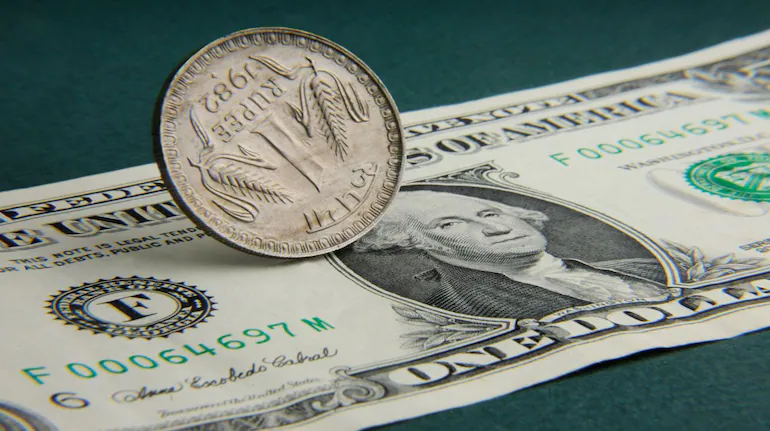
Rupee Falls 16 Paise to Hit Lifetime Low of 77.60 Against US Dollar
On Wednesday last week, the rupee fell 16 paise to 77.60 per dollar, a new lifetime low amid continued foreign fund outflows and a stronger greenback in international markets. On the interbank foreign exchange market, the rupee opened down at 77.57, subsequently falling to 77.61 as the dollar recovered in global markets following hawkish remarks from US Federala Reserve Chairman Jerome Powell.
Crude oil prices jumped by about 1%, placing downward pressure on the currency. The local currency fell 16 paise to 77.60, an all-time low, from its previous close of 77.44.
“The dollar index found support near 103.50. Profit booking from higher levels was seen in the capital market, sending the rupee lower,” said Jateen Trivedi, VP Research Analyst at LKP Securities. The head of the US Federal Reserve stated that the central bank would raise interest rates as high as necessary to limit a jump in inflation that threatens the economy’s foundation.
The dollar index, which measures the greenback’s strength against a basket of six currencies, was up 0.3 per cent at 103.59. The global benchmark is Brent crude prices increased 1% to USD 113 per barrel.
Meanwhile, the 30-share BSE Sensex closed at 54,208.53, down 109.94 points or 0.20 per cent. It reached a high of 54,786 and a low of 54,130.89 during the day. The broader NSE Nifty finished at 16,240.30, down 19 points or 0.12%.
Foreign institutional investors were net sellers in the capital market on Tuesday, according to stock exchange data, selling shares worth Rs 2,192.44 crore.
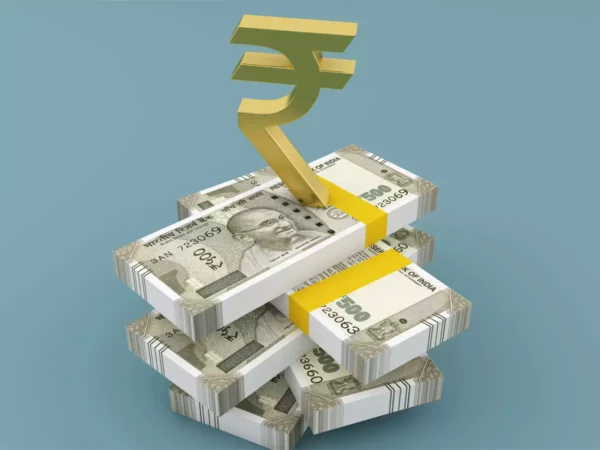
There are three reasons for the rupee’s depreciation against the dollar.
On Tuesday, the Indian rupee remained near record lows against the US dollar, trading at 77.24, extending its losses for the third day. On Monday, the rupee fell 54 paise to a record low of 77.44 against the US dollar, weighed down by the dollar’s strength overseas and continuous foreign fund outflows.
The rupee fell down 55 paise to settle at 76.90.
According to forex traders and market watchers, risk appetite has diminished as US bond yields have risen and concerns about inflation have grown, perhaps prompting more aggressive rate hikes by global central banks.
STRONGER DOLLAR
According to a PTI article, Royce Vargheese Joseph, Research Analyst – Currency and Energy, Anand Rathi Shares and Stock Brokers, highlighted the stronger dollar, dramatic sell-off in equities markets, elevated oil prices, and rising domestic inflation as causes for the rupee’s slide.
According to Joseph, the Indian Rupee spot fell to new lows, reflecting a weakening in Asian rivals amid a stronger dollar index and rising US government yields.
“On Monday, the rupee hit new all-time lows as the dollar strengthened versus its major counterparts. The central bank’s policy action last week increased volatility in most currencies. The general market sentiment is being weighed down by a stronger dollar and a continued rise in global crude oil prices, “According to PTI, Gaurang Somaiya, Forex & Bullion Analyst, Motilal Oswal Financial Services.
SHARP SELL-OFF
As real rates in the US rose, investors were more risk apprehensive, weighing the necessity for a greater rate hike to keep inflation under control in the future, according to Joseph.
DOMESTIC INFLATION
Joseph explained that rising domestic inflation, which is well above the Reserve Bank of India’s (RBI) upper band, may trigger more FII selling of domestic securities.
Somaiya further stated that this week’s focus would be on inflation data from India and the United States.
Jateen Trivedi, Analyst at LKP Securities, believes that “The dollar’s persistence above USD 104 indicates that foreign institutional investors are aggressively exiting emerging markets; the higher volatility index indicates that no trend is sustainable; and, due to higher inflation, the rupee is under pressure from central banks’ aggressive liquidity squeeze. Crude prices have also been climbing for the past month, further weakening the currency.”
RUPEE TO DOLLAR
“We predict the USDINR (Spot) to trade with a positive bias and quote between 77.20 and 77.80,” said Somaiya.
“Meanwhile, the RBI’s off-cycle meeting on May 4th did little to help the rupee strengthen. We may see the rupee spot decline towards 77.8 levels in the future, “Joseph stated.
“I believe the rupee will continue to fall as the dollar gain poses a significant price risk. If the dollar index declines, the rupee will find some respite, “Trivedi explained.
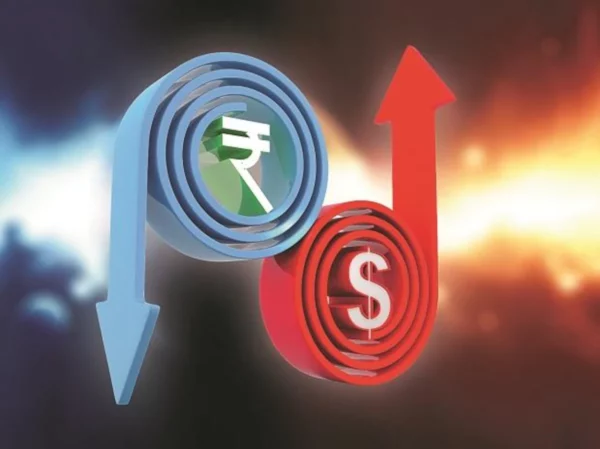
What happens to your money when the Rupee falls
According to news headlines, the Rupee’s value against the US dollar has recently dropped to a new all-time low. This means that purchasing US dollars will cost significantly more in Indian currency. The exchange rate burst through the Rs 77 barrier on Monday.
Let’s say we resist the urge to join the squabble between the two parts defending and criticising the central government’s role in the slide. In that circumstance, we can answer a critical citizen-centric question: what happens to our money when the rupee decreases in value?
But, before we get there, we should address a few other issues. Why does the US Dollar determine the value of the Rupee, and why can’t any other country’s currency be used as a benchmark?
THE DOLLAR BENCHMARK
Both the US Dollar and the Euro are widely used and acknowledged in international marketplaces. The US Dollar accounts for more than 64% of foreign curr ency in international banks. It is approximately 20% for the Euro. The strength of the US economy is reflected in the US Dollar.
The US Dollar is used in 85 per cent of worldwide trade, including crude oil. Around 40% of all loans in the world are made in dollars. The 180-plus other currencies in the world, on the other hand, are largely utilised within their own countries.
This raises two further questions: Why has the US Dollar always been stronger than the Indian Rupee—just go back to when you first started paying attention to the news—and why is the difference widening?
THE WIDENING GAP
When a commodity is in high demand, its value rises. Our imports from the United States exceed our exports. We receive less money from the United States than we need to pay for their goods. We need to buy more dollars through banks, which are only a small part of the enormous foreign exchange market. This is how superiority was established, and the chasm continued to deepen.
THE CURRENT TRIGGER
The war in Ukraine has had a substantial impact on the rupee’s depreciation. Russia is the second-largest oil exporter in the world. Naturally, supply has been disturbed, resulting in a price increase. India, the world’s third-largest oil consumer after the United States and China, is particularly heavily hit.
Other factors, though, are weakening the Rupee. China is our second-largest trading partner after the United States. Lockdowns in numerous Chinese cities have had a negative impact on economic activity. India is naturally bearing the brunt.
The rupee declines when foreign portfolio investors withdraw money from the stock and bond markets. They’re doing it this time because of the worldwide uncertainty produced by Russia’s invasion of Ukraine. In addition, the Rupee has been under pressure as the dollar has strengthened in response to predictions of stronger US economic growth.
Then we all whine about the price increase. When there aren’t enough items, prices rise, creating a demand-supply mismatch. Or when there is more money in the economy, yet we still can’t get what we want. This lowers our currency’s purchasing power.
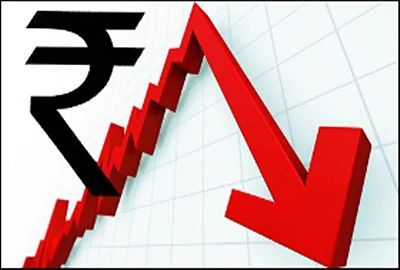
Reasons For Depreciation In Indian Rupee
The demand for the Indian rupee, or any other currency, determines its value. When demand for a currency rises, so does its value (it is termed appreciation). When demand for money falls, its value decreases (depreciates).
When more and more international investors invest in India, the demand for Indian currency rises. Because international investors and organisations can only invest in rupees in Indian markets, they must first convert their cash into rupees before investing or purchasing anything from India. As a result, demand for the Indian rupee grows, and its value against the dollar and other currencies strengthens.
When Indian people and businesses import something (such as crude oil, gold, or other valuables), they must pay in dollars (the de facto global currency). Because the US dollar is the currency used to make international commerce payments, Indians sell rupees to buy dollars. As a result, demand for the dollar rises, and the rupee falls in value against the greenback.
The rupee has fallen over time because India is a net importer (we import more than we export). The figure below depicts the rupee’s depreciation against the US dollar during the previous 30 years.
In January 1992, you had to pay Rs. 26 for 1 US dollar, as the growing trend of the graph illustrates. However, one dollar today costs around Rs. 77. It means that the rupee has lost 3.7 per cent every year on average against the US currency.
Given that India is a net importer, the rupee’s slow depreciation is never a major problem. However, if the rupee’s decline is rapid, this is a cause for concern. In this environment, the rupee’s depreciation of more than 3.2 per cent in less than a month is troubling. And there are two main reasons for the rupee’s decline:
Overseas Investors Are Exiting Indian Markets
Foreign investors are pulling out of India in the wake of the US Federal Reserve’s decision to raise interest rates and the Russia-Ukraine conflict. When foreign investors cash in their investments in India, they are given rupees. However, they must convert their rupee assets to dollars. So they will buy dollars in exchange for the rupee. So, demand for the dollar grows while demand for the rupee falls. Due to which the value of the Indian currency falls versus the US dollar.
Rise In Dollar Buying Due To Jump In Oil Prices
India is a net crude oil importer. Since the start of 2022, global oil prices have risen by more than 60%, forcing Indian businesses to spend more money. As a result, there will be more demand for dollars, resulting in a lower rupee.
Now that we know why the rupee has hit an all-time low, let’s look at how it can affect your money.
Rupee Depreciation: Impact On Your Finances
A dramatic drop in the rupee is expected to have four major consequences for your finances. Let’s take a closer look at the causes.
Inflation may rise
As previously said, when Indian enterprises import something, they must purchase dollars to complete their payment. Importing crude oil will become more expensive if the rupee falls against the dollar. Similarly, India’s imported goods, such as electrical machinery, mechanical appliances, precious metals (such as gold), and so on, will become more expensive.
As a result, by-products of these imported resources are likely to be more costly. Companies may not be able to sustain this expense rise and will pass it on to customers. As a result, India’s overall inflation may grow quicker than anticipated.
Possible Interest Rate Increases – Higher FD and Loan Rates
A reasonable level of inflation is beneficial in a healthy economy since it does not hurt consumers and supports economic activity. A sudden increase in inflation, on the other hand, is never good for the economy.
The Indian government has tasked the RBI with keeping inflation under control. If the RBI anticipates that inflation will exceed its tolerance limit for whatever reason, it will raise the repo rate to combat inflation.
When the RBI boosts interest rates in the economy, banks’ borrowing costs rise as well. As a result, banks pass the cost on to account holders by raising loan and deposit interest rates.
The interest rate has not been raised in a while since the RBI is keeping inflation under control to boost growth. However, central banks around the world intend to raise interest rates in their respective countries. If India’s inflation stays stubborn, we may see some rate hikes shortly.
Your Investment Portfolio May Witness A Decline
Foreign investors’ withdrawal from Indian equities is causing the rupee to depreciate. The withdrawal of foreign investors has resulted in a dramatic drop in equities markets. When the RBI boosts interest rates in the economy, banks’ borrowing costs rise as well. As a result, banks pass the cost on to account holders by raising loan and deposit interest rates.
The interest rate has not been raised in a while since the RBI is keeping inflation under control to boost growth. However, central banks around the world intend to raise interest rates in their respective countries. If India’s inflation stays stubborn, we may see some rate hikes shortly.
Foreign Travel and Studies To Become More Expensive
Foreign investors’ withdrawal from Indian equities is causing the rupee to depreciate. The withdrawal of foreign investors has resulted in a dramatic drop in equities markets.
How Can You Deal With Rupee Depreciation?
While a rapid devaluation of the rupee is bad for your money, there are a few methods to profit from it. For example, you can benefit from the rupee’s depreciation by investing in International Funds. By investing in rupees, you have exposure to foreign currency when you invest in International Funds. Any gain in the value of the foreign currency or decrease in the rupee value will improve your profits.
Another way to deal with rupee depreciation is to diversify your portfolio and include companies with significant foreign exchange revenues. Companies in the IT, FMCG, and pharmaceutical industries, for example. Such businesses are significantly more likely to report bigger revenue and profit improvements as their items get cheaper overseas while margins remain constant.
To summarise, having a diverse portfolio is the best way to deal with events like severe currency depreciation. To protect your finances, adjust your portfolio regularly.
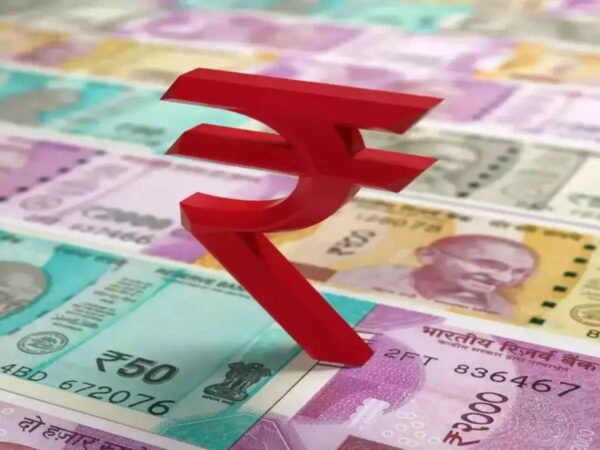
What does the falling rupee mean for you and the economy?
What happens to inflation?
One of the initial effects of currency depreciation is that imports become more expensive and exports become less expensive. The reason is straightforward. A buyer must pay more rupees for the same amount of imports, whereas a seller must pay less dollars for the same amount of exports.
Inflation is projected to rise as imports become more expensive, especially in India, where input products account for a big portion of our imports. A falling rupee also affects the cost of oil imports, as it costs more rupees per barrel of oil, which contributes to rising inflation.
What happens to GDP growth?
This is a more complicated subject given the numerous elements that influence GDP growth. On the one hand, higher input costs and the resulting increase in the price of finished items should boost GDP. However, a drop in demand due to higher pricing could negate this.
The textbook formula of aggregate demand equals the sum of household consumption of goods and services, investment, government expenditure on goods and services, and exports minus imports best explains this.
A falling rupee impacts exports and imports, as exports are likely to benefit while imports suffer. It’s unclear what effect a drop in household spending would have on-demand, especially as the holiday season approaches.
What does this mean for you?
A falling rupee means increased pricing for products and services, more expensive gasoline, and more expensive vacations outside. On the other hand, domestic tourism may expand as more visitors visit India because their currency now buys more here. Export-oriented industries may also generate more jobs in the medium term.
How do rupee appreciation and depreciation affect stock markets?
We frequently see stories about the rupee’s appreciation or depreciation against the US dollar. And the stock market is affected anytime there are significant changes in the currency market.
However, before we can grasp how rupee swings affect equities markets, we must first comprehend these movements.
When the value of the rupee falls against the US dollar, it is called rupee depreciation. For example, if the value of $1 rose from $50 to $60 for whatever cause, the rupee’s value decreased. In terms of rupees, more money is now required to purchase one dollar. This indicates that the rupee has weakened.
On the other hand, Rupee appreciation is when the value of the rupee grows. If the value of a dollar declines from 60 to 50, less rupees are required to purchase a dollar. The rupee is appreciating.
Economic instability, growth potential, global issues, foreign investor investment, and other variables all influence the movement of any currency.
The rupee, like stock markets, trades in the foreign market daily. However, major fluctuations in the rupee’s value significantly impact the stock markets.
So let’s have a look at how that works.
The rupee and the markets have a proportionate relationship in general. When the rupee appreciates, the economic benefits and stock markets rise; yet, when the rupee depreciates, it causes fear and equities markets to collapse.
When the rupee’s value falls, you earn more money from exports but pay more for imports. As a result, export-based companies generally prosper while import-based stocks suffer.
When the rupee rises, export-based stocks such as IT decline and import-based stocks rise.
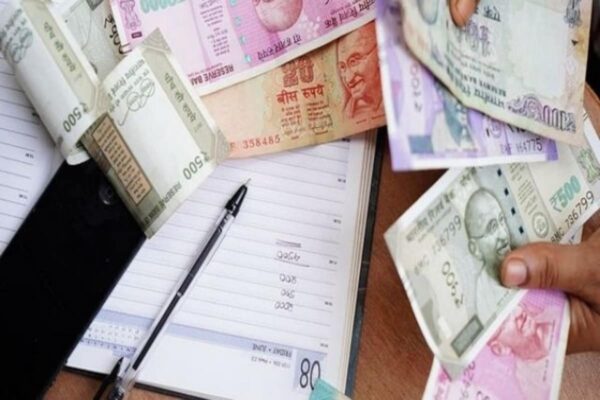
What is rupee appreciation?
Which sectors are affected
Appreciation
Export-oriented sectors like IT, pharma, textiles, and others benefit when the rupee depreciates. These businesses rely on exports for most of their earnings, so they suffer when the rupee falls in value versus the dollar. When they convert dollars for their exports, they receive less money, which reduces their profitability.
While most rupee appreciation results in a market rise because it indicates that the currency is in demand, the value of the rupee rising also signals the possibility of economic growth, drawing additional investors.
However, it’s important to remember that a drop in these sectors could trigger a drop in the overall market. IT companies have a domino effect when they decline because they heavily weigh in benchmark indices.
Depreciation
Meanwhile, industries like oil and gas suffer when the rupee’s value rises. As we import most of our crude oil, if the rupee increases in value, it will cost more money to buy the oil. Oil and gas businesses’ expenses would rise, resulting in lower profitability and a drop in stock prices.
Other industries that import raw goods, such as automobiles and metals, are also hurt by currency depreciation.
Apart from the loss in these sectors, currency depreciation may signify economic weakness and a drop in foreign investment, resulting in a stock market crash.
Currency changes are usually tiny and gradual, but a large one can significantly impact the market. However, now that you know which industries are affected, you may utilise this knowledge to your advantage when investing.
Factors Determining Strength of Currency
Local Factors
Changing Money Supply: The RBI lowers or boosts commercial banks’ statutory Cash Reserve Ratio (CRR). Banks have more money to lend when the CRR limit is reduced (it is now 4%). This increases the amount of money in the bank. When the CRR limit is increased, the effect is the opposite. [Note: More notes can be printed to enhance the money supply.] More loans are provided when banks have more money. As a result, people/businesses spend more (control overspending). GDP expands more quickly when spending rises—incoming foreign investment. The demand for INR grows and strengthens.
Controlled Inflation: Small inflation is beneficial to the economy. It can also help to boost the local currency. It is a sign of a healthy economy when inflation is low, and GDP is expanding at a decent rate. Such an economy appeals to foreign investment. They will purchase government bonds, equities, and real estate, among other things. This activity increases local currency demand (USD comes in to exchange for INR). Increased demand for a currency (for example, the Indian rupee) will strengthen it.
Interest Rates: The government uses another instrument (the Repo Rate) to regulate inflation and economic activity. Banks borrow more money from the RBI when the repo rate is low. Banks lend more money to people and businesses when they have more money. As a result of increased spending in the country, the government collects more taxes. Higher GDP growth is also a result of increased spending (GDP & tax revenue). India will attract more foreign investment if it can strike a balance between GDP growth and low inflation. As a result, the Indian currency strengthens.
External Factors
The local currency’s strength (INR) is affected by worldwide USD demand and supply. External influences frequently outweigh the influence of internal factors. This is one of the reasons the INR has been depreciating for the past ten years. Allow me to illustrate this with instances from real life:
USD is Global Currency: The United States Dollar (USD) is a global currency. USD accounts for more than half of all worldwide transactions. Furthermore, USD is held as a reserve currency by all major economies worldwide. USD is always in demand in this fashion. As a result, it is only natural that the USD strengthens over time. As a result, the INR devalues over time.
Crude Oil Imports: Imports account for over 85% of India’s total crude oil needs (in exchange for USD). India must keep large USD reserves to pay for crude oil imports. As a result, Indian INR is frequently used to purchase USD in the forex market. The increased demand for USD eventually puts downward pressure on the INR’s value.
Global Crisis: Take, for example, the subprime mortgage crisis of 2008. This issue began in the United States. As a result, the United States started printing dollars to promote consumption and GDP growth. As a result, the value of the US dollar should have plummeted. However, following the 2008 financial crisis, the dollar strengthened. Why? Because the US dollar accounts for a significant amount of many countries’ foreign exchange reserves. The world economy will be destroyed if the value of the dollar falls. As a result, governments prefer to hoard more USD during times of crisis. This is done to preserve the value of their “reserves” and the USD’s value.
The Advantages of a Strong Currency
Should a country’s currency be stronger? The immediate effect of a stronger currency is unfavourable. However, a strong currency benefits the domestic economy more in the long run.
Unfortunately, no government is willing to risk immediate consequences to make this long-term decision.
However, if citizens become aware of the benefits of a stronger currency, the government will most likely be encouraged to act. Here are a few advantages of having a stronger currency:
Cheaper Imports: When a currency is strong, it can afford to buy high-quality goods and services from other countries (compared to domestic prices). This has the potential to reduce the cost of goods and services significantly.
Low Inflation: Because citizens have access to cheaper (but high-quality) imported products and services, inflation is kept low and under control at all times.
High Purchasing Power: Stronger currency gives its residents a sense of affluence. Assume a $10,000 trip within the United States. If you convert that money to INR, you’ll get Rs.7,30,000 (at Rs.73/USD). This amount allows an American to have a luxurious holiday in India. Similarly, shopping in India with US dollars might provide considerably more satisfaction.
High Currency Demand: A strong currency backed by low inflation, a high GDP growth rate, and a high employment rate is certain to increase demand. In the future, a high-demand currency could become a potential “global currency.”
Cheap Debt: The government is no exception. A strong and stable currency encourages foreign investment in government bonds (like in US T.bills). These investments do not desire high-interest rates. Even if interest rates are low, they will continue to buy bonds. Why? They only keep their money in strong currencies (like USD). Because the currency is in high demand, it will fetch bigger profits at a later period as the exchange rate rises. [A strong currency can assist a country’s government to obtain low-cost funding.] When the exchange rate rises, even investors profit by selling their shares. For everyone, it’s a win-win situation].
edited and proofread by nikita sharma




